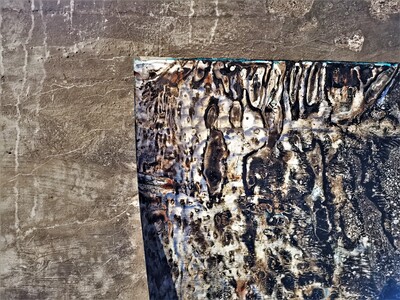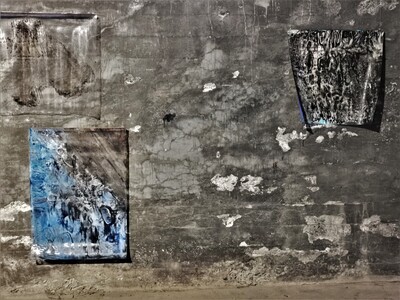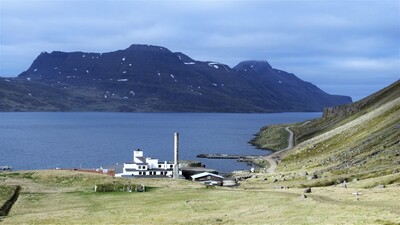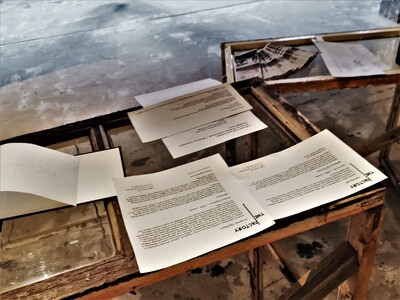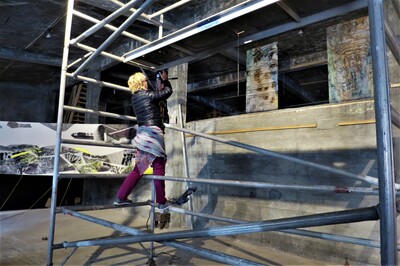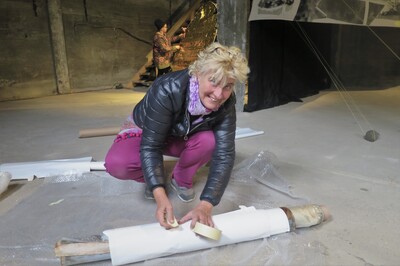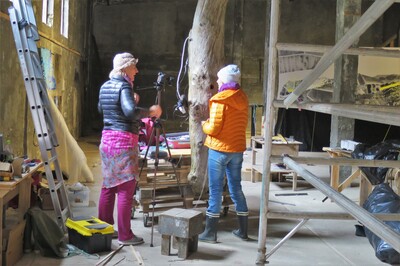The Factory art exhibition will be held in the old fish factory in Djúpavík from June 1 to August 31, 2019. The focal point of the group show is to explore the artists’ personal relation to, and perception of, Iceland. As a multidisciplinary exhibit, The Factory showcases a multitude of visual arts, including but not limited to: textiles, sculptures, paintings, photography, video, sound and art installations. Heide Schimke contributes
A Part Of Ourselves, an exploration of the interplay between the elements that make up both us and the world around us. Read more at
THE FACTORY's website.
The geothermal energy that pulsates beneath the Earth’s surface and the power of the water determine the turbulent relationship between the elements of the Icelandic landmass. A Part Of Ourselves (mixed technique on foil) trace the elements in their different mixing ratios: liquid, gaseous, cloudy, misty, diffuse and soft, out of focus and blurry, cloudy or clear or fiery-glowing, flexible and amorphous. Water is not only used as a material in correspondence with colour, but rather it is something that is inherent in nature and forms and gives shape independently. It has been instrumental to far-reaching aspects of human development such as history, culture, and ecology, as well as for body and soul.
For many years, the German visual artist Heide Schimke has used various media to explore the structures, layers and vibrations of nature. In remote landscapes (with a long-running focus on Australia) she seeks landscapes of experience in which she feels very close to existence and is particularly inspired by erosion. This leads her to see surfaces as part of human history in which all memories are contained. “The paths that lead us somewhere—traces and lines that we find or leave in places—become a part of ourselves, whether we like it or not,” Schimke says. In 2012, she was invited for the first time to an artists’ symposium in Iceland. Further visits followed. The medium of transparent foil gives her work a special tension. The earthiness of erosion remains but competes with the transparency of the medium, which always implies a transcendent dimension.



